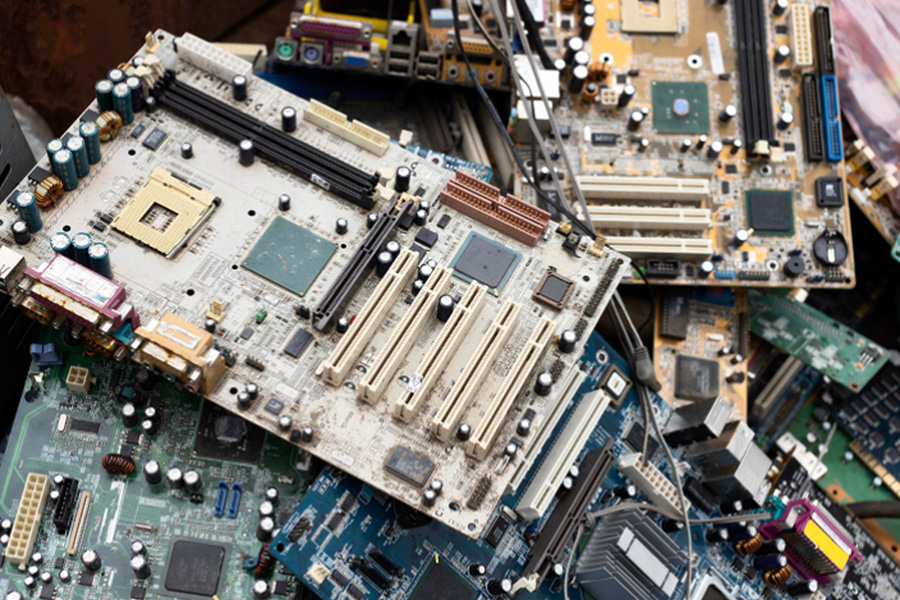Electronic waste remains one of the fastest-growing waste streams worldwide. In Singapore, the rising use of gadgets and appliances results in thousands of tonnes of discarded electronics each year. Misunderstandings surrounding e-waste recycling in Singapore persist, often preventing individuals and businesses from handling disposal responsibly. Understanding what is true and what is not helps in improving proper e-waste management in Singapore and supporting national sustainability goals.
Myth 1: Throwing Electronics into General Bins Is Harmless
Many still assume that disposing of old devices with regular rubbish causes no harm. In reality, discarded electronics contain toxic materials such as mercury, lead, and cadmium. Once mixed with other waste, these contaminants leach into soil and water, creating long-term environmental and health hazards.
Licensed e-waste recycling companies in Singapore collect and process electronic waste safely. They separate reusable components and extract valuable materials like copper and gold while disposing of hazardous substances in compliance with environmental standards. Throwing electronics into general bins disrupts this process, wastes recoverable materials, and increases pollution risks.
Proper e-waste management in Singapore depends on public participation. Depositing unwanted devices in designated collection bins or handing them over to authorised recyclers ensures that harmful elements never reach landfills.
Myth 2: Only Large Appliances Count as E-Waste
Another misconception is that e-waste refers only to large household items like refrigerators, televisions, or computers. E-waste actually covers all electrical and electronic equipment, no matter the size. Mobile phones, keyboards, chargers, and even electric toothbrushes fall under the same category.
Every e-waste recycling company in Singapore handles small and large items using specialised sorting and treatment systems. Smaller devices often contain the same hazardous substances as larger appliances, making responsible disposal equally necessary. Even batteries and accessories require specific handling due to their chemical composition.
Recognising all electronic items as e-waste promotes accountability. Every small device recycled properly contributes to lowering carbon emissions and conserving natural resources used in electronics production.
Myth 3: E-Waste Recycling Is Too Complicated
Many consumers hesitate to recycle because they assume the process is difficult or time-consuming. In Singapore, however, recycling systems have become straightforward and accessible. Collection bins are available at shopping centres, schools, and public spaces, making it easier for households and businesses to dispose of e-waste conveniently.
Partnering with an e-waste recycling company further simplifies the process. Businesses can arrange pick-up services, while individuals can locate drop-off points through national recycling initiatives. The system ensures transparency, traceability, and compliance with environmental regulations.
Modern e-waste management in Singapore now integrates technology to track materials and prevent illegal exports or unsafe disposal. Recycling is no longer complicated—it is a structured and sustainable system anyone can join.
Myth 4: Recycled Electronics End Up in Landfills Anyway
Scepticism persists regarding where recycled items go. Some believe collected electronics still end up in landfills. In Singapore, authorised recyclers operate under strict government oversight. They follow environmental safety standards and report their processes to regulatory authorities.
An accredited e-waste recycling company uses advanced dismantling and recovery technologies to retrieve metals and plastics from obsolete devices. Components are then repurposed or refined for industrial use. Only non-recyclable waste residues, usually minimal, undergo safe treatment before disposal.
This controlled process ensures that electronics do not return to landfills and that valuable resources re-enter the manufacturing cycle. E-waste management in Singapore aims for circularity, turning discarded products into materials for future innovation.
Myth 5: Individual Action Makes No Difference
Some assume that only large corporations can make an environmental impact. In truth, every individual contributes to Singapore’s recycling success. Each mobile phone, laptop, or cable recycled keeps toxic waste away from incinerators and landfills. Collective participation creates measurable environmental benefits.
Small efforts, such as dropping off old batteries at collection bins, help maintain a cleaner, safer ecosystem. Engaging with a licensed e-waste recycling company in Singapore also assures that waste follows proper recycling channels. Corporate programmes, schools, and households collectively strengthen Singapore’s national recycling framework.
Responsible e-waste management in Singapore requires community awareness and consistent participation. Every conscious decision supports a circular economy where resources circulate rather than disappear.
Take Action with Responsible E-Waste Disposal
Singapore continues progressing towards a sustainable future through structured recycling initiatives and responsible corporate partnerships. Individuals and organisations must debunk myths and align with factual recycling practices. Proper e-waste recycling in Singapore not only protects the environment but also conserves valuable raw materials.
Contact Metalo International for e-waste management in Singapore and take an active step toward responsible disposal and environmental stewardship today.

